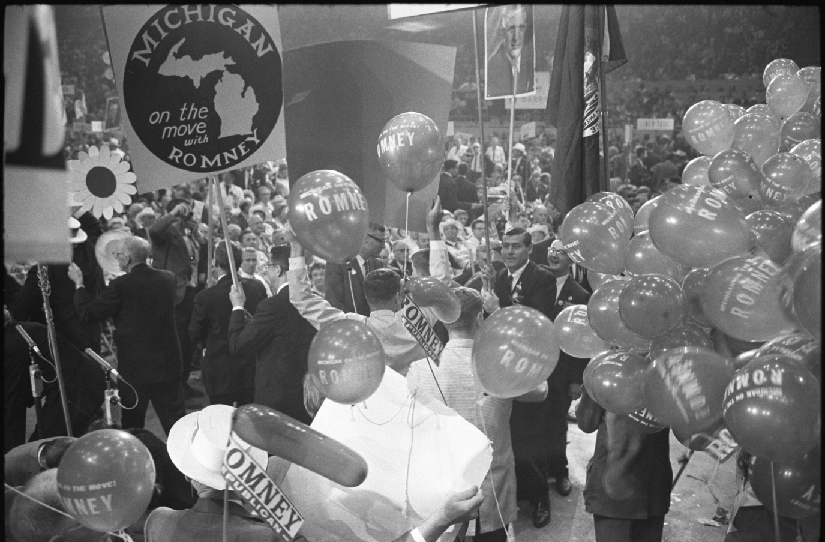| << Chapter < Page | Chapter >> Page > |
The rise of the primary has also displaced the convention itself as the place where party regulars choose their standard bearer. Once true contests in which party leaders fought it out to elect a candidate, by the 1970s, party conventions more often than not simply served to rubber-stamp the choice of the primaries. By the 1980s, the convention drama was gone, replaced by a long, televised commercial designed to extol the party’s greatness ( [link] ). Without the drama and uncertainty, major news outlets have steadily curtailed their coverage of the conventions, convinced that few people are interested. The 2016 elections seem to support the idea that the primary process produces a nominee rather than party insiders. Outsiders Donald Trump on the Republican side and Senator Bernie Sanders on the Democratic side had much success despite significant concerns about them from party elites. Whether this pattern could be reversed in the case of a closely contested selection process remains to be seen.

Early presidential elections, conducted along the lines of the original process outlined in the Constitution, proved unsatisfactory. So long as George
Washington was a candidate, his election was a foregone conclusion. But it took some manipulation of the votes of electors to ensure that the second-place winner (and thus the vice president) did not receive the same number of votes. When Washington declined to run again after two terms, matters worsened. In 1796, political rivals John
Adams and Thomas
Jefferson were elected president and vice president, respectively. Yet the two men failed to work well together during Adams’s administration, much of which Jefferson spent at his Virginia residence at Monticello. As noted earlier in this chapter, the shortcomings of the system became painfully evident in 1800, when Jefferson and his running mate Aaron Burr finished tied, thus leaving it to the House of Representatives to elect Jefferson.
The Twelfth Amendment , ratified in 1804, provided for the separate election of president and vice president as well as setting out ways to choose a winner if no one received a majority of the electoral votes. Only once since the passage of the Twelfth Amendment, during the election of 1824, has the House selected the president under these rules, and only once, in 1836, has the Senate chosen the vice president. In several elections, such as in 1876 and 1888, a candidate who received less than a majority of the popular vote has claimed the presidency, including cases when the losing candidate secured a majority of the popular vote. A recent case was the 2000 election, in which Democratic nominee Al Gore won the popular vote, while Republican nominee George W. Bush won the Electoral College vote and hence the presidency. The 2016 election brought another such irregularity as Donald Trump comfortably won the Electoral College by narrowly winning the popular vote in several states, while Hillary Clinton collected at least 600,000 more votes nationwide.

Notification Switch
Would you like to follow the 'American government' conversation and receive update notifications?